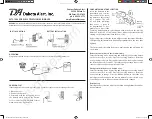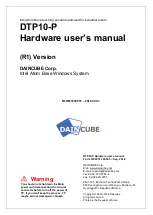
31
© 2000 Motorola, Inc.
Tests & Adjustments
CDMA 800/AMPS-V2260, T2260
CDMA Dual Mode 800-1900-V2267, T2267
Cellular Subscriber Sector
Test & Adjustments
Introduction
These phones allow keypad controlled
cali-bration
(often referred to as “phasing”) of
various operating parameters, as follows:
- Transmit output power
- TX deviation (SAT, DATA, DTMF,
microphone)
- RX discriminator output
These parameters are stored in memory on
the Logic Board and affect the operation of
the transceiver. All transceiver units and all
replacement RF/AL boards are shipped
from the factory with these adjustments
already made. However, if components are
replaced, checking and adjustment of the
parameters may be necessary. Checking and
adjusting parameters is also useful a trou-
blshooting/
diagnostic tool to isolate defec-tive compo-
nents.
The adjusting parameters accessible through
keypad commands are a subset of the com-
plete complement of adjustments, but are the
key parameters necessary for basic opertion.
Access to all adjustments requires a com-
puter connected to the accessory connector
(J3). In addition, the computer must be
loaded with the proper diagnostic software.
Consult with Motorola regarding specific
hardware and software requirements for the
diagnostic computer.
Test Interface
Figure 7: “Connections for Testing and
Adjustments” on page 48 shows the audio
and RF connections to a communications
analyzer when using the MCEL 2000 or
Zero Board test
interface, and test cable.
RF Cable adaptor :2887920K01
Ass’y cable SharkRadio,CDMA
DB25: AE20103172
Zero Board Ass’y with Legacy code
SYN0223B
Adjustments
To properly check and adjust the adjustment
parameters using keypad commands, per-
form the following procedures in sequence.
Only those memory locations referred to in
the following procedure should be pro-
grammed. Data in other memory locations
which are “Stepped through” during the pro-
cedure.
Impotrtant
Summary of Contents for T2260
Page 1: ...CDMA 800 AMPS V2260 T2260 CDMA Dual Mode 800 1900 V2267 T2267 CDMA ...
Page 14: ...14 4 3 01 CDMA 800 1900 ...
Page 20: ...20 4 3 01 CDMA 800 1900 ...
Page 21: ...21 4 3 01 Troubleshooting AUDIO LOGIC BLOCK DIAGRAM ...
Page 23: ...23 4 3 01 Troubleshooting Logic Circuitary Description CDMA baseband Tx Path ...
Page 24: ...24 4 3 01 CDMA 800 1900 CDMA Baseband Rx Path ...
Page 25: ...25 4 3 01 Troubleshooting RF Interface Diagram ...
Page 27: ...27 4 3 01 Troubleshooting Amps Transmitter Block Diagram ...
Page 38: ...38 4 3 01 CDMA 800 1900 ...
Page 58: ...58 4 3 01 CDMA 800 1900 ...
















































